Viewing: Blog Posts Tagged with: The Story of Pain, Most Recent at Top [Help]
Results 1 - 2 of 2
How to use this Page
You are viewing the most recent posts tagged with the words: The Story of Pain in the JacketFlap blog reader. What is a tag? Think of a tag as a keyword or category label. Tags can both help you find posts on JacketFlap.com as well as provide an easy way for you to "remember" and classify posts for later recall. Try adding a tag yourself by clicking "Add a tag" below a post's header. Scroll down through the list of Recent Posts in the left column and click on a post title that sounds interesting. You can view all posts from a specific blog by clicking the Blog name in the right column, or you can click a 'More Posts from this Blog' link in any individual post.
September is Pain Awareness Month. In order to raise awareness of the issues surrounding pain and pain management in the world today, we’ve taken a look back at pain throughout history and compiled a list of the eight most interesting things we learned about pain from The Story of Pain: From Prayer to Painkillers by Joanna Bourke.
- In the past, pain was most often described as an independent entity. In this way, pain was described as something separate from the physical body that might be able to be fought off while keeping the self intact.
- In India and Asia some descriptions of varying degrees of pain involved animals. Some examples include “bear headaches,” that resemble the heavy steps of a bear, “musk deer headaches” like the galloping of a running dear, and “woodpecker headaches” as if pounding into the bark of a tree.
- In the late twentieth century, children’s sensitivity to pain was debated. There were major differences in the beliefs of how children experienced pain. 91 % of pediatricians believing that by the age of two a child experienced pain similarly to adults, compared with 77% of family practitioners, and only 59% of surgeons.
- It had long been observed that, in the heat of battle, even severe wounds may not be felt. In the words of the principal surgeon to the Royal Naval Hospital at Deal, writing in 1816, seamen and soldiers whose limbs he had to amputate because of gunshot wounds “uniformly acknowledged at the time of their being wounded, they were scarcely sensible of the circumstance, till informed of the extent of their misfortune by the inability of moving their limb.”
- Prior to 1846, surgeons conducted their work without the help of effective anesthetics such as ether or chloroform. They were required to be “men of iron … and indomitable nerve” who would not be “disturbed by the cries and contortions of the sufferer.”
- Concerns about medical cruelty reached almost hysterical levels in the latter decades of the nineteenth century, largely as a consequence of public concern about the practice of vivisection (which was, in itself, a response to shifts in the discourse of pain more widely). It seemed self-evident to many critics of the medical profession that scientists trained in vivisection would develop a callous attitude towards other vulnerable life forms.
- In the 19th century it was believed that pain was a necessary process in curing an ailment. In the case of teething infants, lancing their gums or bleeding them with leeches were painful treatments used to reduce inflammation and purge the infant-body of its toxins.
- John Bonica, an anesthetist and chronic pain suffer himself established the first international symposium on pain research and therapy in 1973, which resulted in the founding of the International Association for the Study of Pain (IASP).
Featured image credit: The Physiognamy of Pain, from Angelo Mosso, Fear (1896), trans. E. Lough and F. Kiesow (New York: Longmans, Green, and Co., 1896), 202, in the Wellcome Collection, L0072188. Used with permission.
The post Eight facts on the history of pain management appeared first on OUPblog.

Pain is a universal experience. Throughout time, everyone knows what it feels like to be in pain — whether it’s a scraped knee, toothache, migraine, or heart attack. Although the feeling of pain may remain the same, the ways in which it was described, treated, and interpreted in the 18th and 19th centuries varies greatly from the ways we regard pain today. The below slideshow of images from The Story of Pain: From Prayer to Painkillers by Joanna Burke will take you on a journey of pain through time.
-
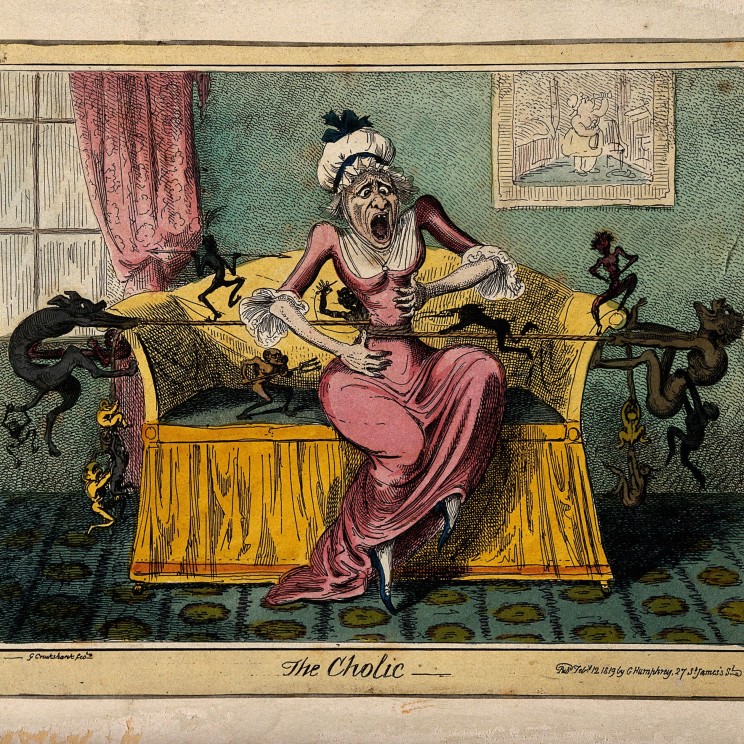
The Cholic
She feels like her waist is being constrained by a rope that is being tightened to an unbearable extent by demons. Other devils prod her with spears and pitchforks. The painting on the wall behind her shows a woman over-indulging in alcohol. Coloured etching by George Cruikshank, after Captain Frederick Maryyat, 1819, in the Wellcome Collection, V0010874. Figure 3.2 Page 64.
-

Administration of nitrous oxide
The administration of nitrous oxide and ether by means of the wide-bore modification of Clover’s ether inhaler and nitrous oxide stopcock, from Frederic W. Hewitt, Anaesthetics and their Administration (London: Macmillan & Co., 1912), 583, in the Wellcome Collection, M0009691. Figure 9.3 Page 283.
-
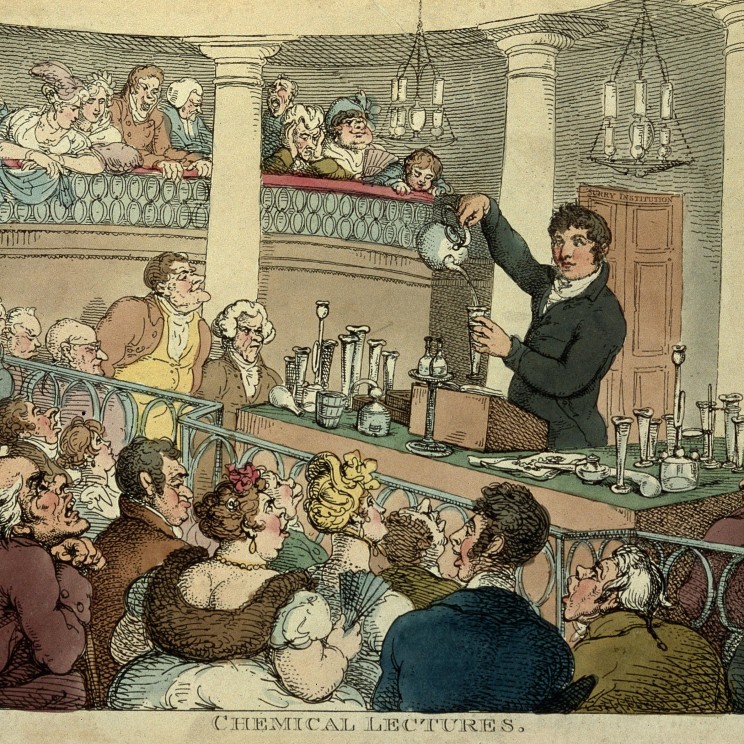
Chemical Lecture
Thomas Rowlandson, “A chemical lecture by Humphrey Davy at the Surrey Institute”, colour etching, 1809, in the Wellcome Collection, L0006722. Figure 9.1 Page 274.
-
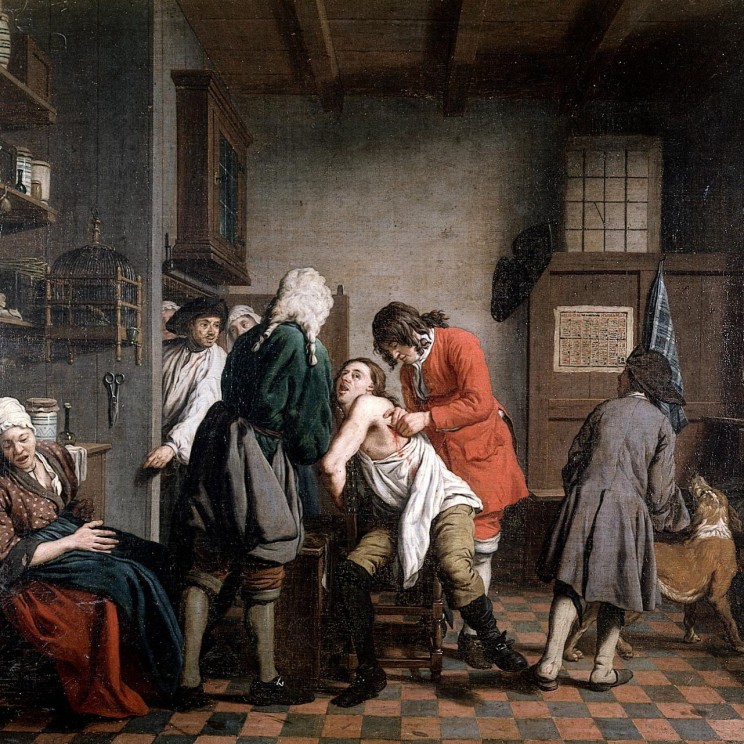
Surgeon attending to a wound
Oil painting by Johan Joseph Horemans of an interior with surgeon attending to a wound in a man’s side, 18th cent., in the Wellcome Collection, L0010649. Figure 8.2 Page 234.
-

William Osler at bedside of patients
1925, from William Cushing, The Life of Sir William Osler (Oxford: Clarendon Press, 1925), 552, in the Wellcome Collection, L0004900. Figure 8.4. Page 259.
-
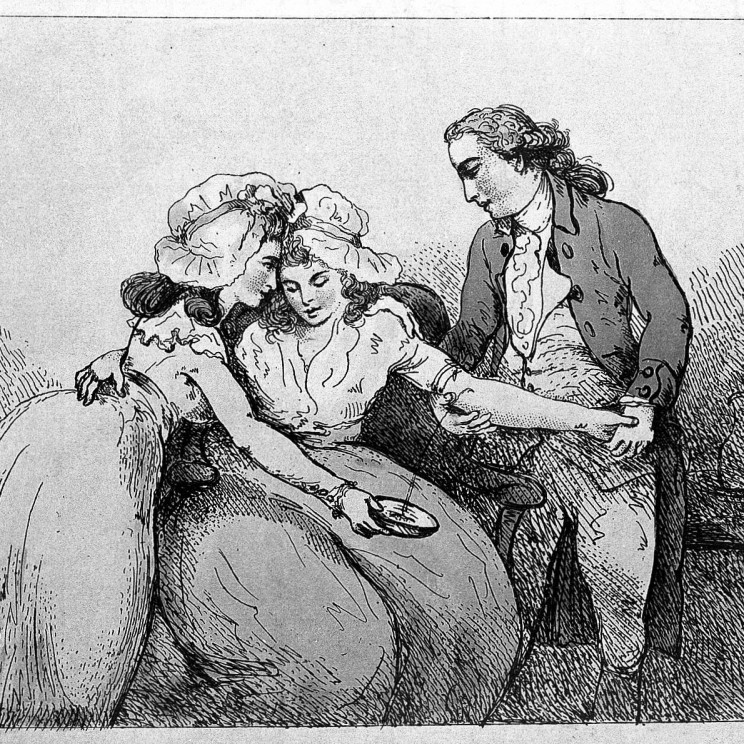
The process of bleeding
A surgeon bleeding the arm of a young woman, as she is comforted by another woman. Coloured etching by Thomas Rowlandson, c. 1784, in the Wellcome Collection, L0005745. Figure 8.1, Page 233.
-
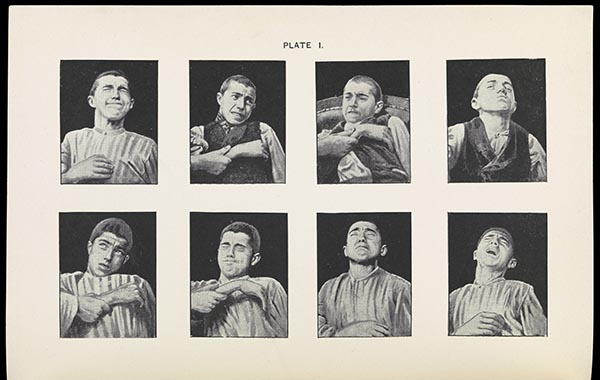
The Physiognomy of Pain
Fear (1896), trans. E. Lough and F. Kiesow (New York: Longmans, Green, and Co., 1896), 202, in the Wellcome Collection, L0072188. Figure 6.3 Page 171.
-
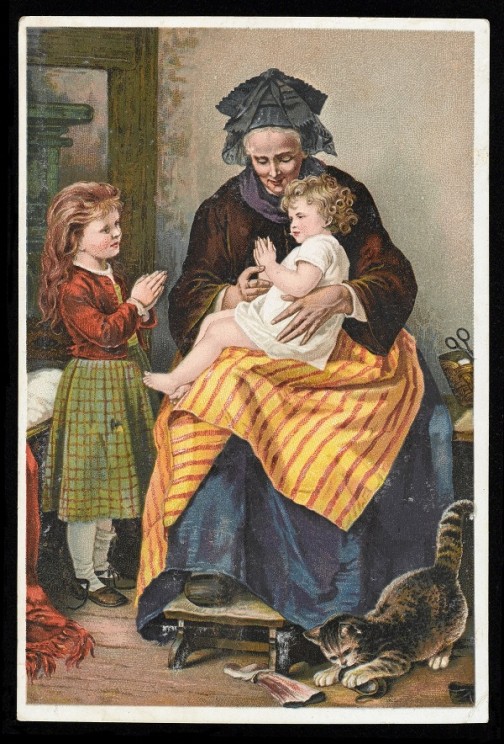
The Morning Prayer
Advertisement card of Dr Jayne’s Tonic, Vermifuge, Carminative Balsam, and Sanative Pills. R. Epp. c 1890s, in the Welcome Collection, L0041194 Figure 4.3. Page 116.
-

Origin of Gout
Gout (caused by excessive alcohol consumption) is portrayed as a burning pain, inflicted by a demon with red-hot pincers. The blackbird is a harbinger of worse to come. Coloured etching after Henry William Bunbury, c. 1780s-1800, in the Wellcome Collection, V0010848. Figure 3.3 Page 66.
Featured image credit: The unconscious man is nothing more than a passive on which little demons equipped with surgical instruments can operate. “The Effect of Chloroform on the Human Body”, watercolour by Richard Tennant Cooper, c. 1912, in the Wellcome Collection, V0017053. Used with permission.
The post The story of pain in pictures appeared first on OUPblog.












